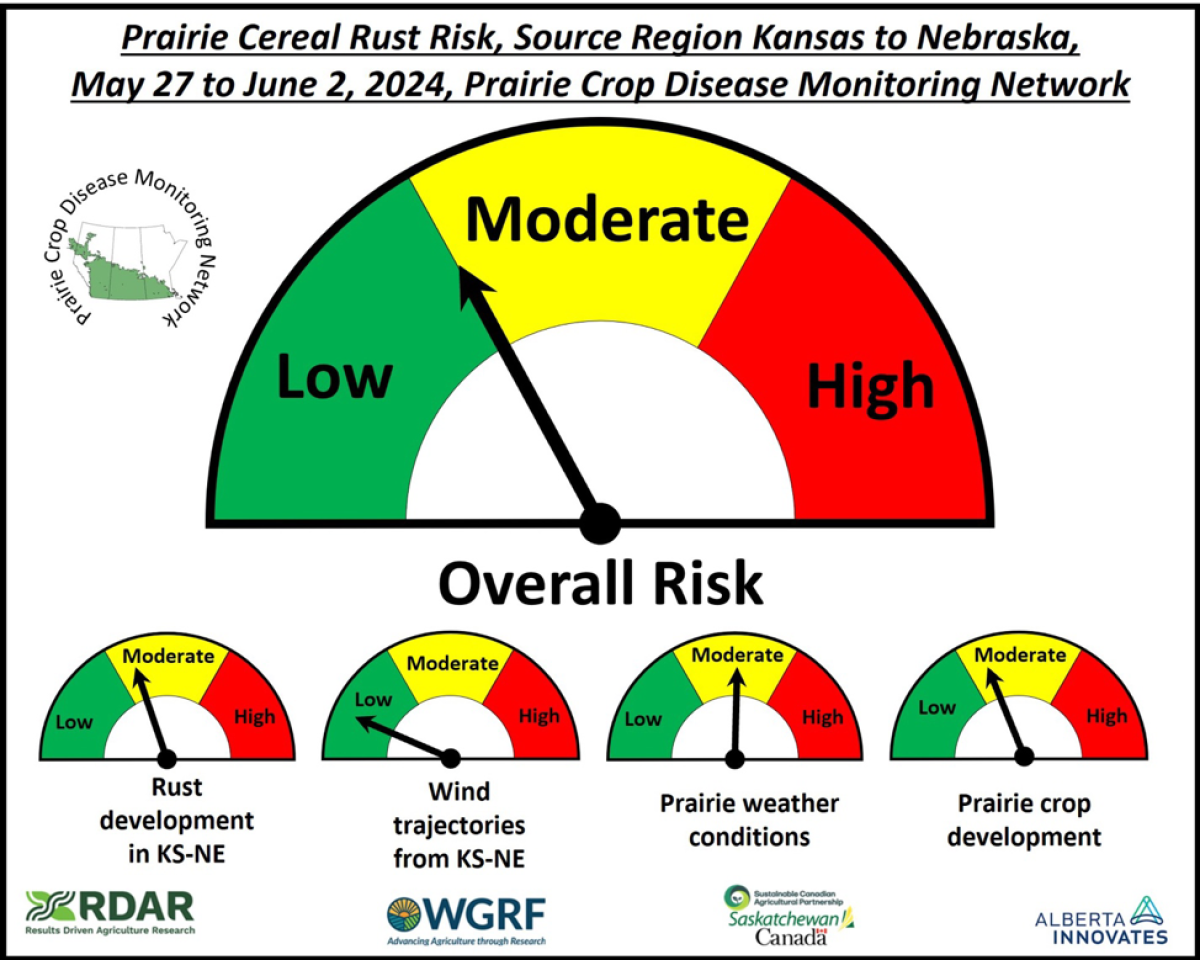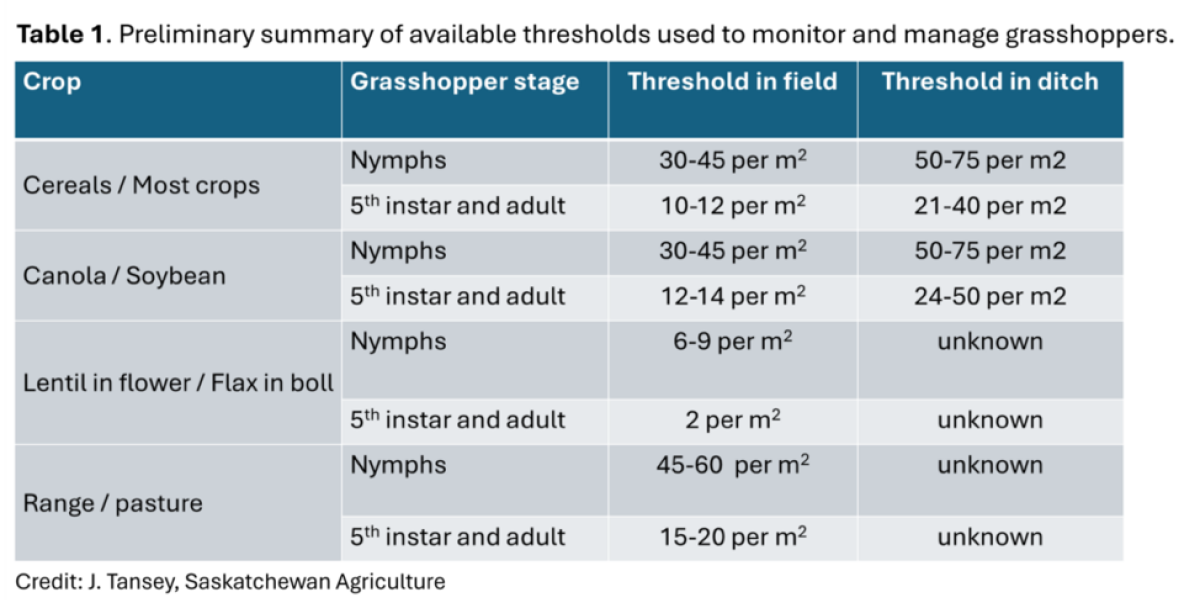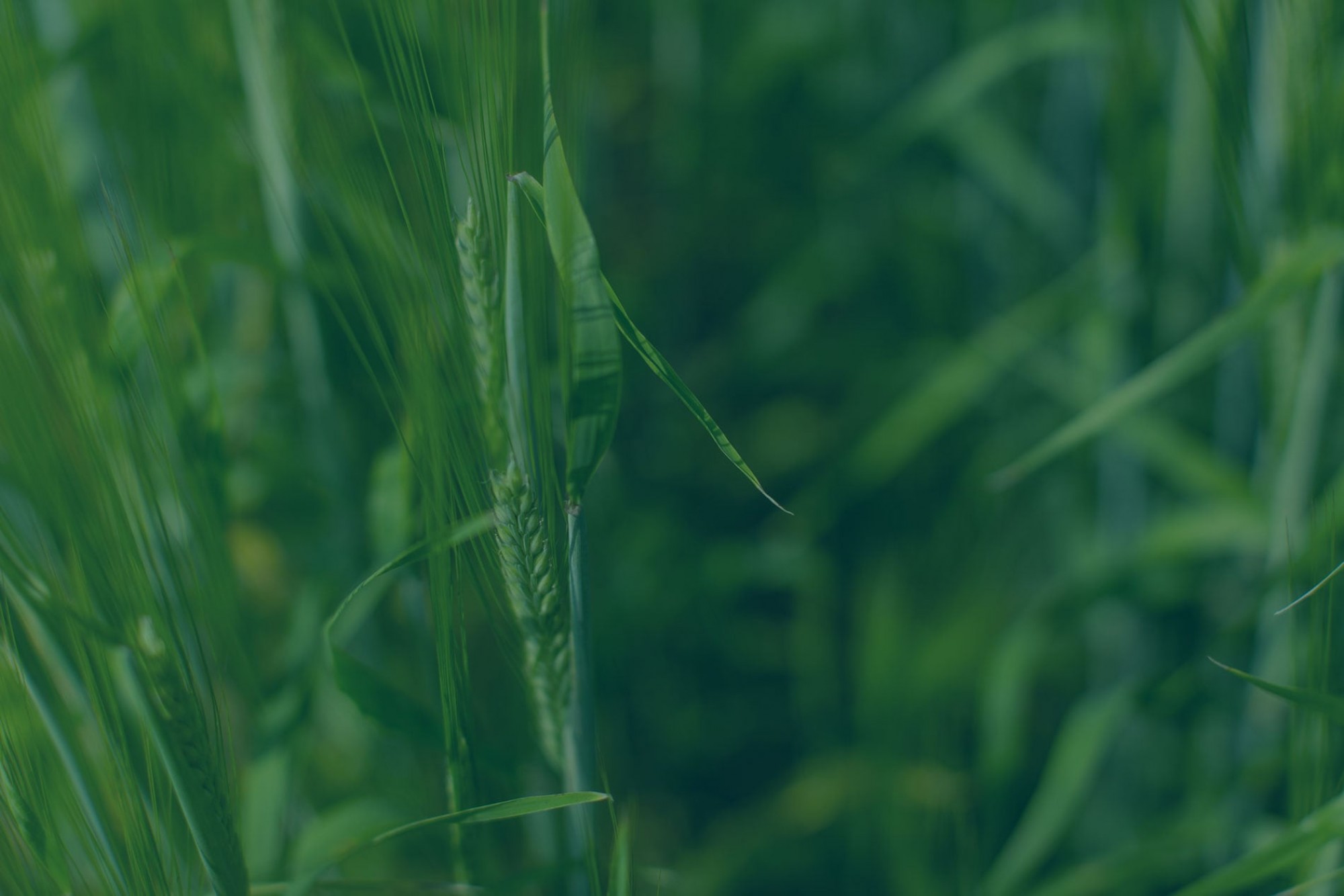Late June Pest Management Update
Disease update
Bacterial leaf streak
Bacterial leaf streak (BLS) is one of the diseases to keep an eye on for 2024 growing season. Look for BLS symptoms while scouting wheat and barley fields. Pay special attention to translucent, water-soaked spots or streaks as they might be early symptoms of BLS.
Scouting tips and management measures in this factsheet: Bacterial Leaf Streak and Black Chaff of Cereal Crops in the Prairies.
If unsure whether the symptoms are BLS or fungal foliar diseases, collect the leaf samples and send them to accredited labs for analysis.

Cereal rust risk – update from PCDMN
The early and widespread appearance of stripe rust in the PNW, TX/OK and KS/NE regions is still concerning, while the recent stripe rust observations from North Dakota, South Dakota, Minnesota and Wisconsin bring the stripe rust issue very close to the Prairies, especially the central to eastern regions.
Over the next 1-3 weeks if favourable weather conditions (especially more rainfall) occur in these source US regions, further rust development could occur. This would result in more rust spores being available to be blown into the Prairie region, as well as more northerly rust development into the Dakotas and Minnesota/Wisconsin.
If growing a rust susceptible (S) or moderately susceptible (MS) variety, it will be important to keep an eye on your crops and follow further PCDMN cereal risk updates.
Find the variety susceptibility information in Alberta Seed Guide, or refer to the following brief list:
Winter wheat varieties susceptible to stripe rust: AC Radiant, CDC Buteo, AAC Elevate, Broadview, and CDC Falcon.
Spring wheat and durum varieties that are S or MS to stripe rust: 5700PR, AAC Cameron, AAC Iceberg, AAC Tisdale, AAC Tomkins, AAC Warman, AAC Whitefox, AC Foremost , Cardale, CDC Abound, CDC Adamant, CDC Flare, CDC Pilar, Faller, Prosper, SY Natron, SY Rorke, SY Torach, and Unity.
See the full blog post about cereal rust risks.

Insect Pest update
Cutworms
Cutworm scouting spans April to late June across the Canadian prairies! Scout fields that are “slow” to emerge, are missing rows, include wilting or yellowing plants, have bare patches, or appear highly attractive to birds – these are areas warranting a closer look.
If you find cutworms, please consider using the Alberta Insect Pest Monitoring Network’s “2024 Cutworm Reporting Tool” and then view the live 2024 cutworm map updated daily. Review the live map to see where cutworms are appearing then prioritize in-field scouting accordingly.
For more information, see Prairie Pest Monitoring Network’s weekly update, Insect of the Week, and cutworm management tips by clicking the button below.
PPMN Weekly UpdateGrasshoppers
Due to cooler and wetter spring, grasshopper development is slower than 2023. However, nymphs of the economically important grasshopper species have been observed at southern Alberta and southern Saskatchewan since mid-May.
Keep scouting for grasshoppers to keep informed of their developmental stage and population density. Pay attention to species as not all grasshoppers cause damage to the crops. Refer to the following thresholds for different stage and crops.


